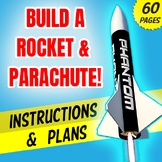67 results
Astronomy simulation microsofts

Tides Lab Using Water Balloons - Hands On Experience That Kids LOVE!
This lab is a really fun way to use discovery and investigation to teach students how gravity and inertia cause tides, along with the moon. The cost is low (a package of water balloons and yarn) and it is a great activity to get kids moving and outside. They work in small groups and go through a series of steps and procedures and record data. This was one of the most fun labs of the year for students and was instrumental is having kids understand why we have high tides on the side of the Earth c
Subjects:
Grades:
6th - 12th
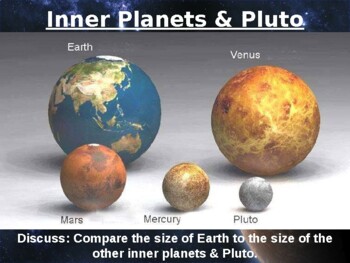
Planet Sun Space Solar System Universe Size Comparison Pictures Gr 3 4 5 6
This is an AMAZING PowerPoint. It shows pictures of the inner planets to emphasize the comparison of their sizes, then it shows them in relation to the outer planets and the Sun. Next, it shows other stars that are even larger than the Sun. Every year when I use this, my students are awe-struck.
Subjects:
Grades:
3rd - 6th
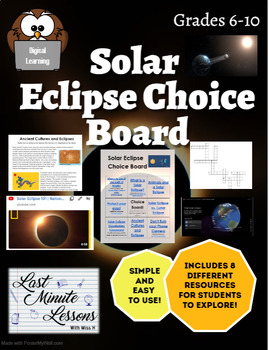
Digital Resource: Solar Eclipse 2024 Choice Board and Resources
Includes links to articles, videos, images, and simulations for students to explore as they learn about the solar eclipse. Topics covered in the choice board include:- What is a solar eclipse?- Protecting your eyes- The path of totality- How animals react- Solar vs. Lunar Eclipse- Digital vocabulary crossword puzzle- Ancient cultures and the solar eclipse- How to safely use your phone to take a picture
Subjects:
Grades:
6th - 10th
Types:

Experience the Moon Phases Discovery Lab
Students create and actually see the moon phases as they change the alignment between the Earth, Moon, and Sun. You only need the following supplies (styrofoam balls, popcicle sticks or sharpened pencils, and a light without a lamp shade) as seen in the picture, along with the Lab Sheet I have created to go with this hands-on activity. Could be a 1 or 2 day activity. Answer Key included. Very easy to set up and do. My students love this-as do I. Thanks and enjoy!
Subjects:
Grades:
1st - 6th
Types:

Constellations Lab
I was about to lecture on constellations this year and realized that perhaps the students could teach themselves by using Stellarium-web.org, where they can move and manipulate the sky. I created this worksheet/guide for them to follow! It worked great and they enjoyed it. I had to give them some verbal help, but overall it was much more effective than a lecture. You will need computer access for your students, although you could do it as a demo on a smartboard but that would be less effecti
Subjects:
Grades:
7th - 12th, Higher Education, Adult Education, Staff
Types:
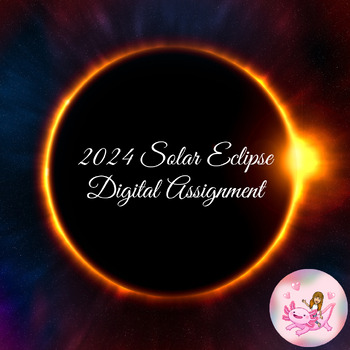
2024 Solar Eclipse Digital Assignment
This digital assignment assists students in understanding what an eclipse is and the different types of eclipses' as well as how they can happen. The assignment also cover the safety of wearing appropriate eye protection while viewing the eclipse. The reading portions of this assignment were pulled from NASA and are followed with comprehension questions to check students' knowledge on the reading. There is also an interactive link provided in which students can get a visual of the pathway the to
Subjects:
Grades:
7th - 10th
Types:
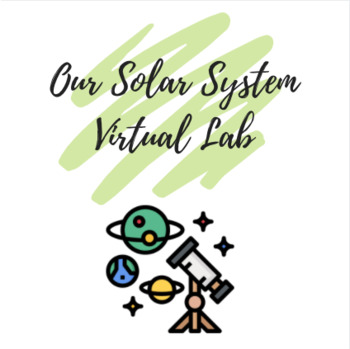
Our Solar System Virtual Lab
Students will explore our Solar System using an online simulation. Students will collect data based on distance from the sun, rotational period, orbital period, and average temperature of each planet. Students will then answer analysis questions based on the data they collected.
Subjects:
Grades:
8th - 12th
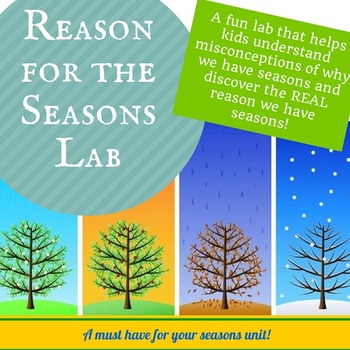
Reason for the Seasons Lab
This lab is suitable for students from grades 5-8 and addresses the following learning goals:
I can survey a group of people to collect data
I can tally data and organize by main idea
I can create a bar graph or pie chart with the data I collect
I can model how the Earth experiences seasons
I can model what would happen if the Earth did not have a tilt
I can describe how seasons in the Northern Hemisphere differ from seasons in the Southern Hemisphere through the year
Materials:
This document,
Subjects:
Grades:
5th - 8th
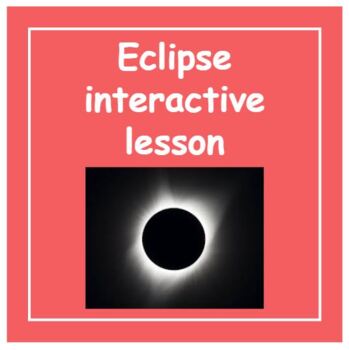
What is an eclipse? Interactive Lesson (works as sub plans, too)
This interactive lesson teaches students about eclipses. Students engage with two interactive websites using this resource. Students will even run a simulation to see what the Solar Eclipse of 2017 looked like from their location. The write-up has students working individually as they engage with two interactive websites. This activity also pairs nicely with an interactive Pear Deck slide show as a follow-up that I also have available in my Teachers Pay Teachers store both separately and as
Subjects:
Grades:
6th - 12th
Types:
NGSS:
MS-ESS1-1
Also included in: Eclipse interactive lesson and practice problems
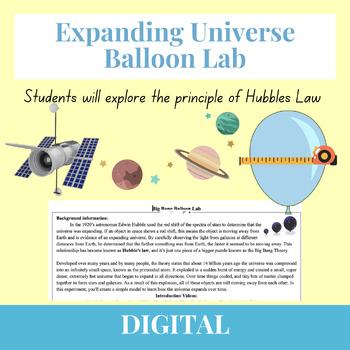
Expanding Universe Balloon Lab
Students will delve into the mysteries of the universe as they explore Hubble's Law and the expanding cosmos using an innovative balloon model. This hands-on experience allows them to witness the principles of cosmic expansion first hand while simulating the distances between galaxies. Materials Needed:BalloonsTape Measures/String & RulersSharpies
Subjects:
Grades:
9th - 12th
NGSS:
HS-ESS1-2
Also included in: The Big Bang Theory Unit Bundle
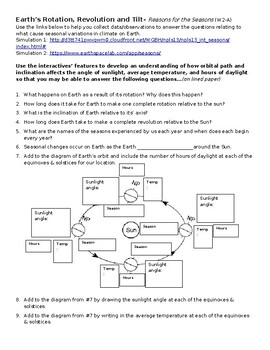
Rotation, Revolution and Reason For The Seasons
NGSS Performance Expectation:MS-ESS1-1 Develop and use a model of the Earth-sun-moon system to describe the cyclic patterns of lunar phases, eclipses of the sun and moon, and seasons.This interactive will allow students to begin to visualize what causes our seasons and what causes the time periods we experience such as days, and years. Students will look at Earth's orbital position, light angle, temperature, day length, and position of sun above the horizon to study and explain the seasonal vari
Subjects:
Grades:
6th - 8th
Types:

Universe Timeline - A brief history of 6 billion years
This activity introduces students to the major events that the majority of scientists agree occurred in the history of our universe. It extends from the formation of our solar system and ends with the evolution of humans and their migration across our planet.
Students need to identify the major events, chronologically order them, and then create a scaled timeline which lists these events. This lesson helps students visualize the major events as well as recognize trends in the order and timing
Subjects:
Grades:
7th - 10th
Types:

Gravity and Orbits PhET Exploration
Students will work collaboratively to explore how gravity affects orbits using a PhET simulation.Students will develop a Claim - gather Evidence - and provide Reasoning.MS-ESS1-2. Develop and use a model to describe the role of gravity in the motions within galaxies and the solar system.
Subjects:
Grades:
6th - 9th
NGSS:
MS-PS2-4
, MS-ESS1-2
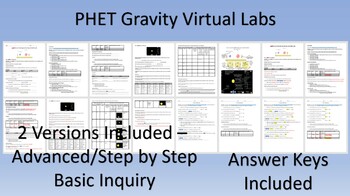
PHET Gravity and Gravity and Orbits Virtual Labs Worksheets and Answer Keys
This resource provides instructions and lab worksheets for the pHET Gravity Force Lab and Gravity and Orbits Simulations. Check out the simulations at these links if you are not familiar: Gravity Force Lab and Gravity and Orbits. The first simulation allows students to manipulate the mass of two objects and the distance between them to discover the principals of Newton's Law of Universal Gravitation (Law of Gravity). The second lab shows an application of Newton's Law of Gravity and the orbit of
Subjects:
Grades:
4th - 12th
Types:

Mars Retrograde Motion
This XplorePak features a realistic animation that allows the user to visualize the apparent retrograde motion of Mars over a series of several months. The simulation is controlled by a slide mechanism allowing the user to move the Earth and Mars around the Sun over a period of 9 months.
Subjects:
Grades:
7th - 9th
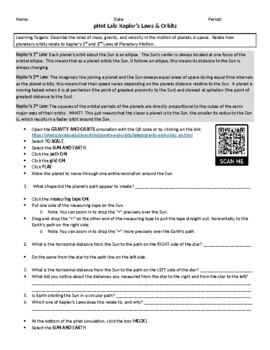
Kepler's Laws Worksheet for pHet Simulation
Students use this worksheet to guide them through an exploration of Kepler's 1st and 2nd Laws with the pHet simulation for Gravity and Obits.
Subjects:
Grades:
7th - 8th
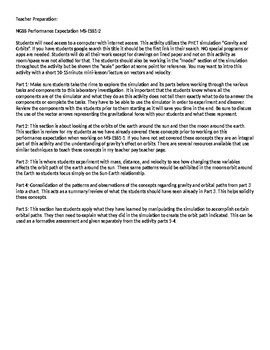
Gravity and Orbits Simulation Investigation
This resource is a way in which students can work with an online simulation/interactive through PHET and explore how/why gravity affects orbital paths. This interactive allows students to visually see how gravity impacts orbits by experimenting with factors such as mass and distance then modeling how these impact orbital paths of solar bodies. Your students will be asked to manipulate, model, and explain while participating in this activity.Covers NGSS Performance Expectation:MS-ESS1-2: Develop
Subjects:
Grades:
6th - 9th
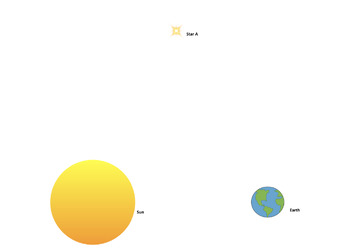
Stellar Parallax Activity - CUSTOMIZABLE
Includes 3 customizable documents. Students can work individually or in small groups to practice and apply skills real astronomers use to calculate distances between Earth and stars in space. All supplies with the exception of a ruler or straight edge are included. A simple breakdown for the math calculations is included with step-by-step instructions! The activity concludes with follow up questions. Everything can be customized!
Subjects:
Grades:
9th - 12th, Higher Education, Adult Education
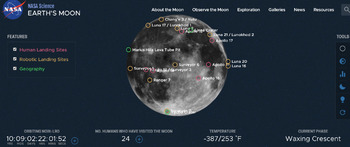
Distance Learning- NASA Moon Simulation Explore Sheet
With the self-guided explore sheet students are able to investigate the Moon! Using NASA's Moon interactive simulation and the Explore sheet kids are guided to investigate everything from Moon phases to major landforms!
Subjects:
Grades:
4th - 12th, Higher Education, Adult Education
Types:
NGSS:
MS-ESS1-2
, MS-ESS1-3
, MS-ESS1-1
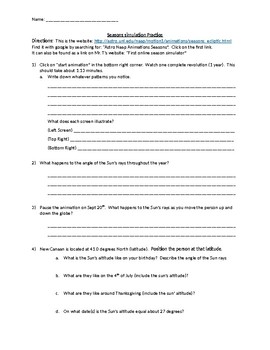
Seasons online simulator
This worksheet walks students through the following online simulator. Students explore the various screens and look for patterns that explain why seasons occur and what can be observed throughout the year.
Subjects:
Grades:
6th - 12th
Types:

Animated Solar System
Great & Fun Activity! How big is our Solar System? This activity will amaze your students. This is a class activity and is best done outdoors. Can be done in long hallways as well.The planet cards should be printed in color and then laminated. The Power Point should be presented before the activity to provide a basis for understanding the activity better. Song mnemonic provided as a fun way to help them remember the distances between the planets. Enjoy!
Subjects:
Grades:
4th - 12th, Adult Education
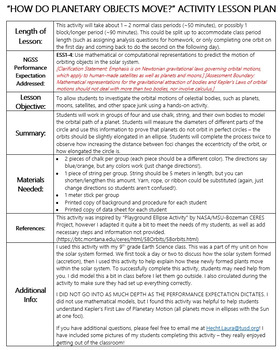
"How Do Planetary Objects Move?" - Ellipses Activity
Are you struggling with engaging your students in understanding how bodies move in our solar system? LOOK NO FURTHER!This activity is great for modeling orbits of planets, moons, and satellites. Ditch that old activity where students use pushpins and sit at their desks. This activity gets students up, outside, and actively engages students in learning! No boredom here!Students will work in groups of four and use chalk, string, and their own bodies to model the orbital path of a planet. Students
Subjects:
Grades:
7th - 11th
NGSS:
HS-ESS1-4
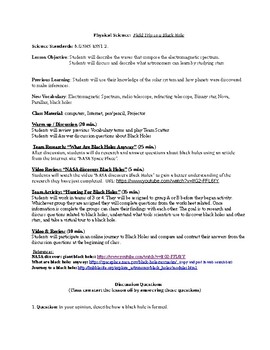
Journey to a Black Hole
Students take an incredible interactive virtual journey using NASA's space website to visit black holes and discovery the mystery behind these powerful dying stars. On their journey, students will discover and use tools used by scientist to explore the universe around them. Once they have documented their findings, students will begin a virtual journey to a black hole (Cygnus 1 or Andromeda). This product comes with a lesson plan with all the references and links to the websites that will be use
Subjects:
Grades:
4th - 12th
Types:

Simulation - Planet Exploration - A Field Trip into Space
This space unit is a simulation in which a class steps into the shoes of science specialists who create a video documentary called "A Field Trip into Space" As you can see in the preview, the students create a new identity. They will become an adult with a job in their own community. They will apply for a new job with the S.P.A.C.E. (Scientific Program for Aeronautic Cosmic Explorers) This unit will take approximately 4 weeks to complete (45 minutes – 1 hour / 2-3 days a week). This unit inc
Subjects:
Grades:
3rd - 5th
Types:
Showing 1-24 of 67 results



